- Home
- News
- What’s On
- Activities for Children
- Arts & Crafts
- Autos and Bikes
- Business events
- Car Boot & Auctions
- Charity events
- Churches & Religious
- Comedy
- Dance
- Days out & Local interest
- Education
- Exhibition
- Film
- Gardening & Horticulture
- Health
- Markets & Fairs
- Music
- Nature & Environment
- Spiritual
- Sport
- Talks and Discussions
- Theatre and Drama
- Business
- Local Information
- Jobs
- Deaths
- Charity events
- Contact Us
Macclesfield lass who married a spy
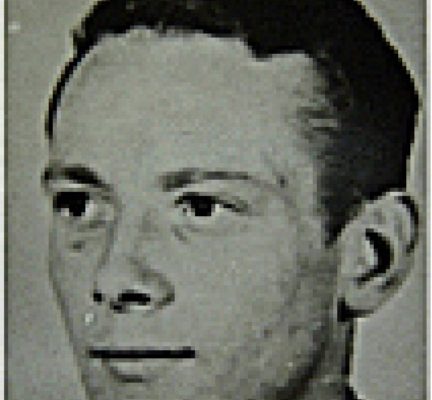
Research and article by Doug Pickford
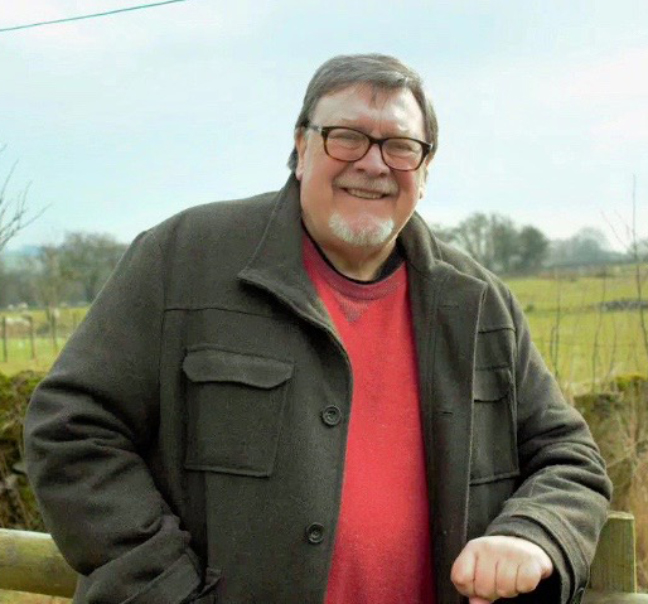
Previously secret papers released in 2004 by the Foreign Office show British intelligence sent many of its own agents to certain death in occupied Holland during the Second World War.
And, sadly, one was the husband of a Macclesfield girl who married the agent during a whirlwind romance in her own home town in the early days of WW2. However, she was unaware of her young love’s secret life, assuming him a volunteer in the Free Dutch Army. After the war, her hopes that he was still alive increased when a con man cruelly pretended he was a friend and knew the brave Dutchman was still living.
The agents, covertly trained in Britain to carry out sabotage, were parachuted straight into the arms of the waiting enemy, which had penetrated the entire SOE network in Holland. Almost all – including the Macclesfield spouse – were executed in concentration camps.
As far as almost everyone knew, Hendrik Sebes was a young Dutchman who was, like many of his fellow compatriots, keen to fight for his homeland after the Nazi invasion. Despite being neutral, the Netherlands in World War II was invaded under orders of Adolf Hitler. On 15 May 1940, one day after the bombing of Rotterdam, the Dutch forces surrendered.
The Netherlands was placed under German occupation, which endured in some areas until the German surrender in May 1945.
Hendrik – a veteran of Dunkirk – was a part of the Free Dutch Army. Many hundreds came t0 Congleton and formed the Prinses (CORRECT SPELLING) Irene Brigade and surrounding areas in the war’s early days where they were trained for invasion of their country. So many in fact that there was an ‘overflow’ to Macclesfield, where some billeted.
Like many Macclesfield girls of the time, Mary Louise Wilkinson was a happy-go-lucky factory worker. She met her future husband at a dance, and it was love at first sight. Shortly afterwards he was invited to meet her family at 108 Brook Street.
She was to become pregnant and when her Dutch boyfriend intimated he might be away on military service for a while, the two decided to get married.
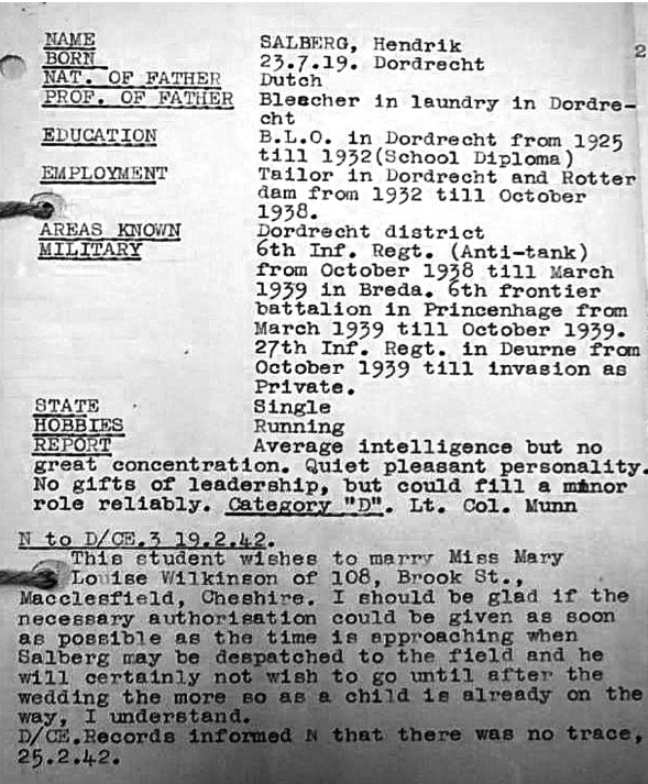
Henrik had to ask his army superiors, and official papers show what the ‘top brass’ thought of this potential MI6 spy and his wish to be married.
The released top-secret files show the authorities were willing to send the 21-year-old father to be into what become known as the cauldron of hell. A notice dated February 2 1942, said he was of average intelligence, but no great concentration, adding ‘…quiet pleasant personality. No gifts of leadership, but could fill a minor role reliably. Category D’
At the base of the note, a typewritten remark read: ‘This student wishes to marry Miss Mary Louise Wilkinson, of 108 Brook Street, Macclesfield, Cheshire. I should be glad in the necessary authorisation could be given as soon as possible as the time is approaching when Salberg (Sebes) may be dispatched to the field and he will certainly not wish to go before the wedding the more so as a child is already on the way, I understand.’
This is very revealing. He was already using another name – Salberg- and his superiors were quite defamatory about him. A spy would, I suggest, be higher up the scale than a category ‘D’.
This is meant to deceive. Henrik was an athletic young man with previous infantry experience (see document). He was not the nice-but-dim young man he was said to be.
When he met his Macclesfield bride, he was living a double life, which Mary was not aware of until after the war ended.
Captain Kenneth Strong of MI5, who during the war had been head of German Intelligence at the War Office, would not confirm young Henrik was a spy. All he would reveal was a red rubber-stamped ‘Nothing Recorded Against’.
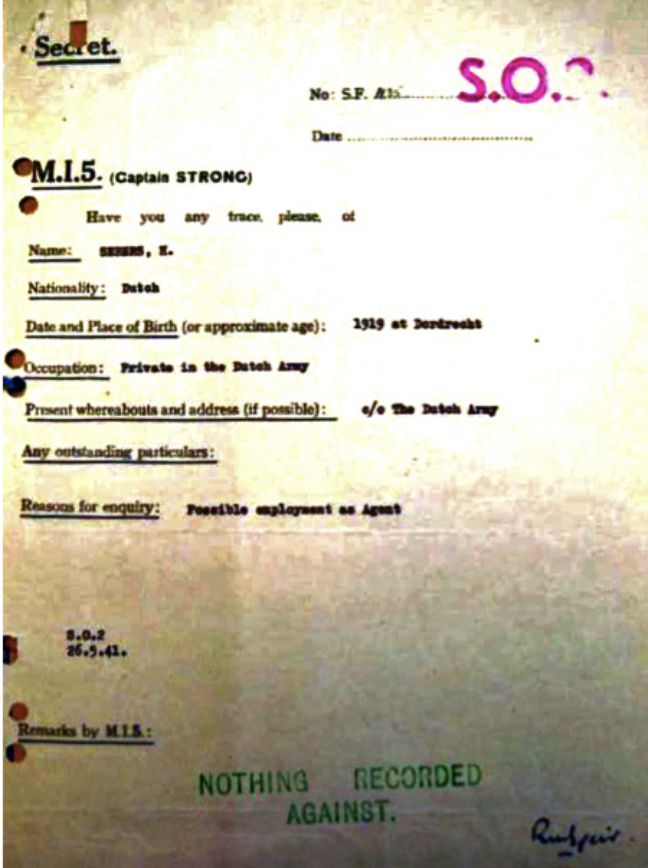
Despite Captain Strong’s bland reply, we should note that Henrik was involed in the clandestine invasion of Holland. Operation North Pole (German: Unternehmen Nordpol), often referred to as the Englandspiel (“England Game”), was a counter intelligence operation launched by the German intelligence agency. German forces captured Allied resistance agents operating in the Netherlands and used the agents’ codes to fool the Allies into continuing to provide the agents with information and supplies. About 50 Allied agents were identified captured, and executed.
One was Henrik. So perhaps Captain Strong was correct – for it transpired Henrik was working not for the British but the Dutch.
The Bureau Bijzondere Opdrachten (BBO, “Office of Special Assignments”) was a Dutch secret service during World War II. The BBO dispatched secret agents to the German-occupied Netherlands, where they supported the local resistance and carried out sabotage activities.
Henrik Johannes Seebs was executed on September 1944 at Mauthausen.
Files from the Dutch Special Operations Services showed:
SEBES, Hendrik Johannes (Henk): 19190723 Dordrecht – 19440906 Mauthausen; 599 SOE agent; 19420405/06 (near Harskamp, Otterlo, Veluwe); arrested 19420509: @ training name Hendrik.
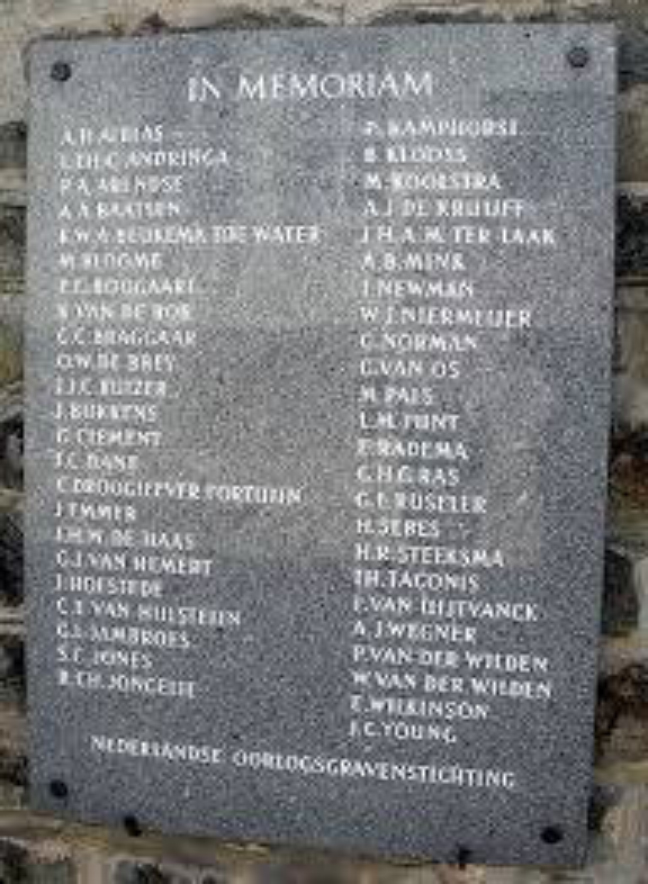
A memorial at The Hague in Holland. One of the names is H Sebes.
Now, many years after, the truth and be told. Dutch agents Barend Kloos ,Hendrik Sebes and Johan de Haas were dropped or taken to occupied Holland by boat.
Their contact also went via Jordaan. At the end of April, the British ordered them to make contact with an agent at an address in Haarlem. The Germans managed to locate the address. By passing himself off as a member of the resistance, police officer Poos won the trust of the shopkeeper. As a result, the Germans were able to arrest agents De Haas and Andringa on April 28th. After De Haas was told he had been betrayed, he was so shocked he volunteered much information. He declared for instance that the agents who had been dropped would meet in a bar in Utrecht on May 1st. Andringa went there accompanied by Poos. The building was surrounded in advance by officers of the SD. Agents Ras en Kloos were arrested, Jordaan and Sebes managed to leave the bar in time, as they suspected danger.
During the arrest, the Germans found a notebook with a telephone number that proved to belong to the operator. The agents agreed to meet once again at the railway station in Rotterdam. The phone number of Sebes was passed on and Sebes was told, allegedly on behalf of Kloos, to come to Rotterdam. He was arrested there as well on May 9th.
His young bride knew nothing of this. At the end of the war, she received a letter from Henrik’s mother and father who had been visited by a man who said he was a friend of Henrick. He was, in fact a confidence trickster who had certainly been in the concentration camp with the Dutch spies before their executions, but was released after the war. He visited many relatives of the prisoners who had been there and told them all that their loved one they feared was dead was, in fact, alive.
This cruel deception led to money being given. Henrik’s parents wanted to believe he was alive and wrote to his young Macclesfield bride, whose hopes were raised but the British Government soon dashed her hopes.
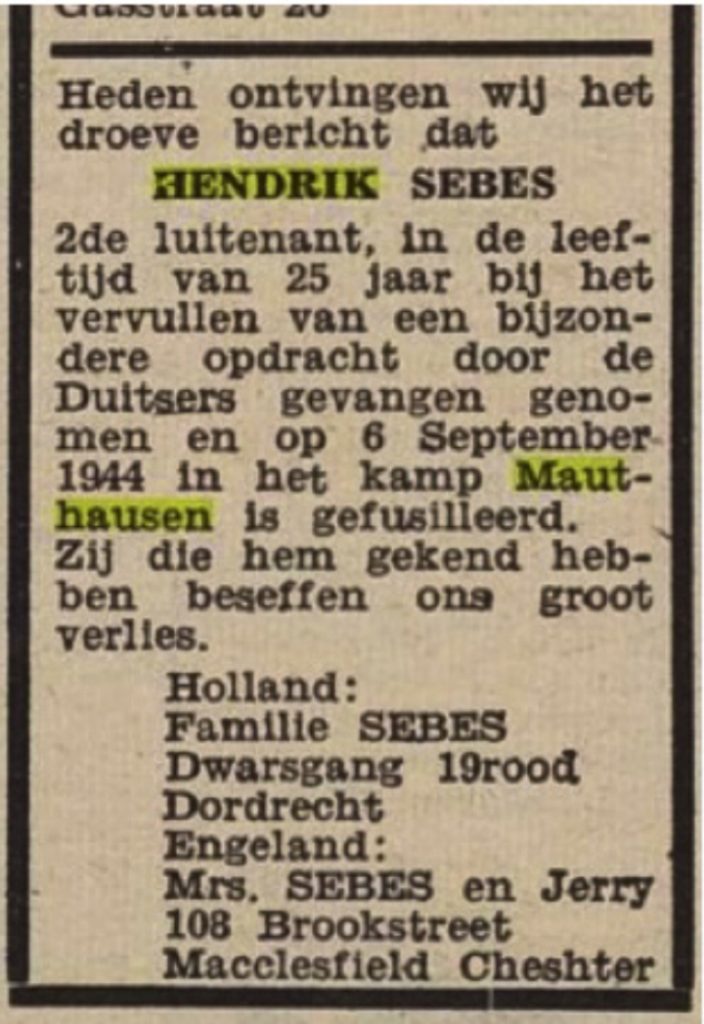

You must be logged in to post a comment Login